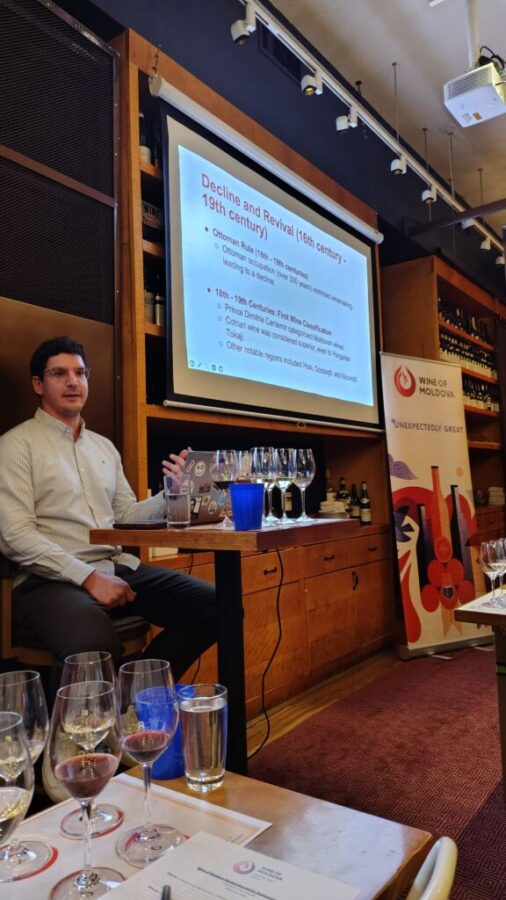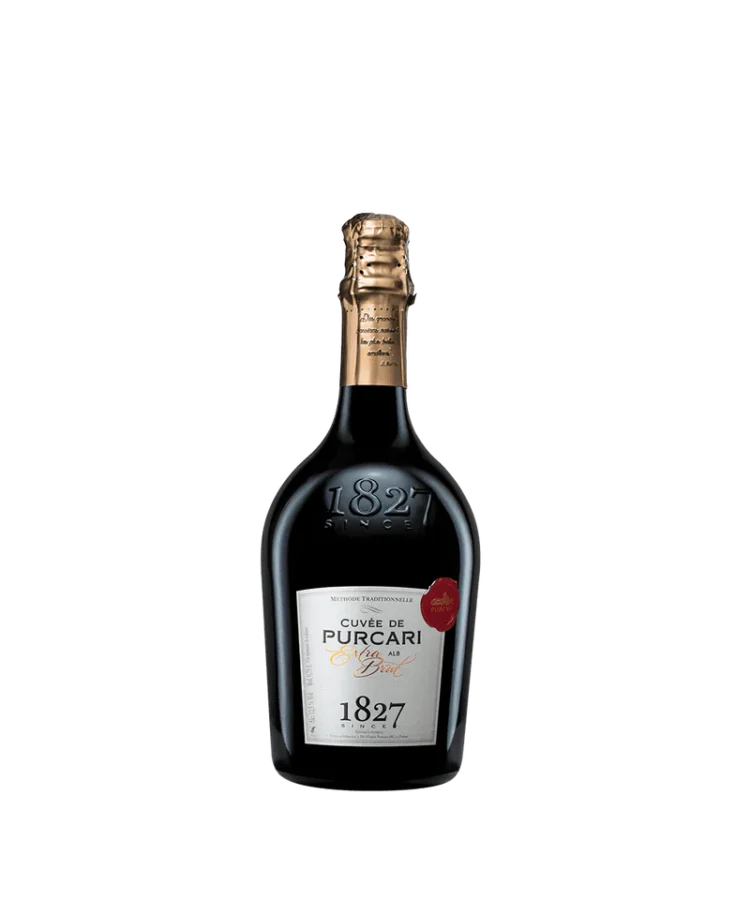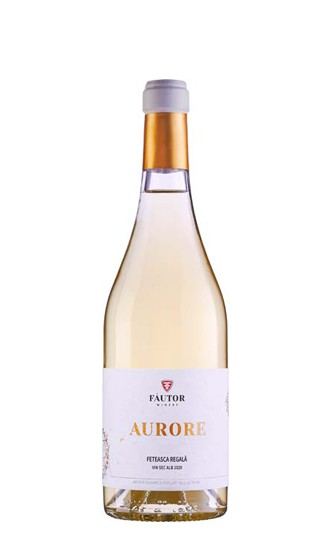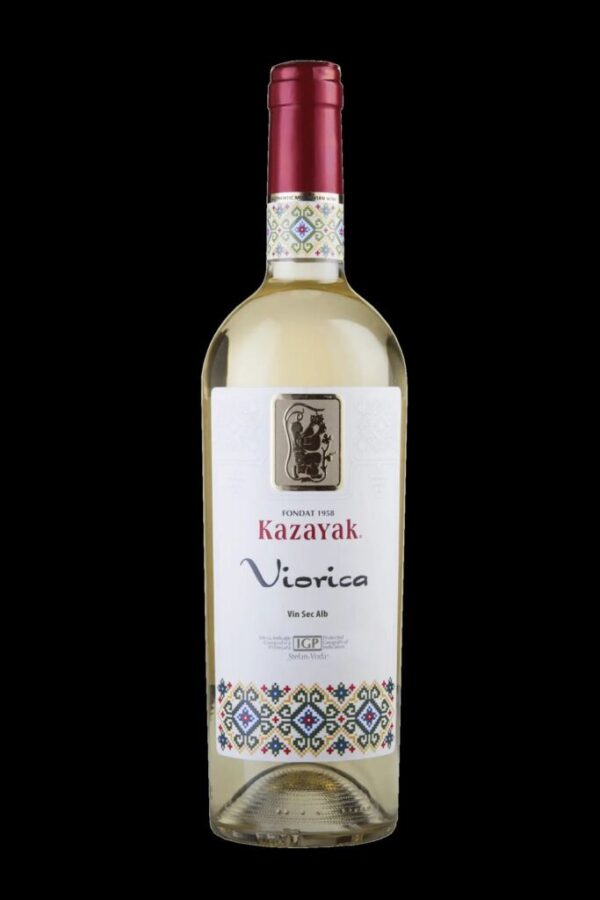
The history of winemaking in the eastern European country of Moldova was a long and sometimes tumultuous one, influenced by trade, annexation, colonization, and finally independence. Evidence of vine cultivation in Moldova can be traced to as far back as 6000 BCE, when the Cucuteni-Trypillia civilization that inhabited the region began domesticating wild vines to produce wine. Greek colonization of Moldova sometime between 600-300 BCE brought additional vine varieties, innovative viticultural techniques, and Greek wines to the region.
The introduction of Roman rule between the 2nd and 16th centuries resulted in increased quality wine production. Subsequently, the onset of the Christian era made winemaking a matter of religious significance; monks would produce wine for use at mass and when administering the sacrament.
During this time, trade routes between Moldova and Russia, Poland, Germany, Byzantium, and Hungary were established, enabling Moldova to emerge as a major wine producer to Russia. This was aided by Prince Stephen the Great’s initiatives to increase trade connections with Russia.
In the 16th century winemaking was outlawed when Moldova came under the rule of the Ottoman Empire. This ban was lifted in 1812 after Moldova was annexed by Russia under the Bucharest Peace Treaty. During this time, German, Bulgarians, Swiss, and French immigrants introduced advanced winemaking techniques to the region. By 1861, settlers owned almost 12% of Moldovan vineyards.
Vine cultivation increased six-fold and wine production 15-fold in Moldova during the 19th century. The Basarabian Winemaking College for viticultural research and development was established in 1865. By 1900, Moldova was Russia’s second largest wine supplier, producing 50% of its wines.
Moldova lost almost all of its vines to the Phylloxera aphid that swept across Europe in the late 19th century. In response, Moldovan winemakers began to plant new grape varietals using different viticultural techniques in an effort to salvage wine production in the region.
Wine production was industrialized in Moldova under Soviet rule between 1940-1985. During this time, winemaking in Moldova grew at a feverish pace with roughly 12 million bottles a month being produced at huge facilities that emphasized quantity over quality. Wine production fell sharply in 1985 when a Soviet anti-alcohol campaign to limit alcohol consumption resulted in the destruction of approximately a third of Moldovan vineyards.
Moldova declared independence from Russia in 1991. Russian Moldovan relations deteriorated in the decade that followed, resulting in Russian embargoes on Moldovan wine imports that had a significant negative impact on the country’s wine industry because Russia had been its chief wine export market.
Although Russia lifted its embargo on Moldovan wine in 2006, for the past 15 years, Moldovan winemakers have been reinventing their approach to winemaking. They have begun to emphasize quality over quantity, crafting fine wines using international and local varietals that reflect the unique terroir of the region. The National Office of Vine and Wine (ONVV), created in 2013, and formed in cooperation with the Moldovan government and local winemakers, is dedicated to the research and advancement of Moldovan viticulture and wine production. The current focus of the ONVV is to increase Moldovan exports to the Asian, European, and North American markets.

Moldova: Key facts
- Total population: 2.5 million
- Ranked #1 globally in vineyard density
- Total surface area under vine: 114000 hectares
- White varietals: 34,100 ha
- Red varietals: 33,300 ha
Major white varietals
- Aligote
- Sauvignon Blanc
- Chardonnay
- Muscat Ottonel
- Pinot Gris
- Feteasca Alba
- Feteasca Regala
Major red varietals
- Cabernet Sauvignon
- Merlot
- Pinot Noir
- Saperavi (different from the Georgian variety in that it is a cross with Merlot)
- Rara Neagra
- Feteasca Neagra
Topography of vineyards
- 34% on slopes along the Nistru, Prut, and Raut rivers
- 52% on hillsides
- 14% situated by the Codru forest (offers a protective barrier against the elements)
Three IGPs (PGIs) and a PGI for Brandy (IGP Divin)
IGP Codru: 2687 ha
- Location: Central Moldova
- Climate: Temperate-continental, mild winters, warm summers, plenty of sunlight, and low precipitation (450-550 mm annually)
- Landscape: Rolling hills, valleys, and rivers (Prut, Nistru, and Raut)
- Predominant soil type: Chernozem (mineral-rich black soil) surrounded by forests that offer good drainage
- Grape varieties: White (63%) Chardonnay, Rhine Riesling, and Sauvignon Blanc Red (37%): Cabernet Sauvignon and Merlot
- Sparkling wine style: Round and balanced, with a fine and persistent mousse, and floral, citrus fruit, and toast notes
- Still white wine style: Fresh and mineral-driven, with white flower, and citrus and summer fruit notes
- Red wine style: Smooth and silky, with red berry and spice notes
- Fortified wines: Rich and full-bodied, with dried fruit, nut, plum (white), and chocolate (red) notes
IGP Stefan Voda (1304 ha)
- Location: Southeastern Moldova
- Climate: Semi-dry, with mild winters, warm summers, plenty of sunlight, and a lengthy growing season (179-187 days)
- Landscape: Rolling hills, deep valleys, and hillside slopes near the Dniester, Botna, and Cogalnic rivers
- Predominant soil type: Iron and mineral-rich loamy-clay
- Grape Varieties: White (43%): Chardonnay, Sauvignon Blanc, and Pinot Gris Red (57%): Cabernet Sauvignon, Merlot, Rara Neagra, and Malbec
- White wine style: Balanced and structured, with floral and fruity aromas, and a refreshing minerality
- Rose’ wine style: Crisp acidity, and fresh orchard fruit and berry notes
- Red wine style: Silky and smooth, with sour cherry, black currant, and spice notes
IGP Valul Lui Traian (3520 ha)
- Location: Southern Moldova
- Climate: Temperate continental (influenced by the Black Sea), mild winters, hot summers (mitigated by the proximity of the Tigheci forest and the presence of coastal breezes), plenty of sunlight, and a lengthy growing season
- Landscape: Hills, Deep valleys and terraces along the Prut, Lalpug, and Cahul rivers
- Predominant soil type: Chernozem, loamy-clayey, and clay
- Grape Varieties: White (40%): Sauvignon Blanc, Chardonnay, and Muscat Otonel Red (60%): Cabernet Sauvignon, Merlot, Saperavi, and Feteasca Neagra
- Sparkling wine style: Floral and fruit-dominant
- Still white wine style: Elegant, fresh, and structured, with white and yellow flower, and citrus and orchard fruit, and sweet spice notes
- Rose’ wine style: Balanced acidity and minerality, and fresh red berry fruit notes
- Red wine style: Smooth and velvety, with berry and dark stone fruit notes, and a long finish
- Fortified wine style: Rich and intense, with dried fruit, nutmeg, and honey (white), and plum and chocolate (red) notes
Ancient grape varietals from Moldova
Feteasca Alba (White)
- Regions: Romania, Moldova, Hungary, and Ukraine
- Percentage under vine: 651 ha (370 ha are categorized IGP)
- Wine types: Sparkling, dry, semi-dry, and semi-sweet
- Wine styles: Fresh and delicate, with a vibrant acidity, and acacia, wildflower, citrus, and green apple notes
Feteasca Regala (White)
- Regions: Romania and Moldova
- Percentage under vine: 299 ha (72 ha categorized as IGP)
- Wine style: Medium to full-bodied, with floral, grapefruit, citrus, and pear notes, fine tannins, and good aging potential
The National Office of Vine and Wine (ONVV) has developed new disease and climate change resistant grapes such as the Muscat-like Viorica, with vibrant white and yellow flower and citrus aromas, and jasmine, lemon, summer stone fruit, lychee, and herb notes.

Daniela Porro of Colangelo & Partners organized a masterclass on Moldovan wines conducted by Wine Enthusiast’s Moldovan Wine Expert, Aleksandar Zecevic, at Corkbuzz in Union Square.

The in-depth introduction spotlighted a selection of Moldovan wines crafted from international and local grapes. Among these were two excellent traditional method sparkling wines, including a Chateau Purcari, Cuvee de Purcari, Extra Brut, and a Cricova Winery, Blanc de Noirs, Extra Brut, and a pair of still white wines produced from local varietals, including a Fautor Winery, Aurore Feteasca Regala, 2023, and a Kazayak, Viorica, 2023.

Chateau Purcari, Cuvee de Purcari, Extra Brut
- 60% Chardonnay, 30% Pinot Blanc, and 10% Pinot Noir
- Flavor profile: Crisp and elegant, with a fine mousse, a good acidity, and balanced notes of citrus fruit, toast, and sliced almond
- Pairs well with grilled vegetables, steamed shellfish, sauteed seafood, simply prepared pastas and rice dishes, baked breads, viennoiserie, and pastries, and northern and coastal Indian fare.

Cricova Winery, Blanc de Noirs, Extra Brut
- 100% Pinot Noir
- Fresh, vibrant, and supple, with a balanced acidity and minerality, energetic bubbles, and notes of summer and orchard fruit, herb, and baked bread
- Pairs well with raw seafood such as sashimi, oysters, and clams, as well as quiches, baked salmon. miso-glazed black cod, and grilled seafood.

Fautor Winery, Aurore, Feteasca Regala, 2023
- 100% Feteasca Regala
- Soft, lighter-bodied, and subtly aromatic, with notes of white flower, fennel, herb, and orchard fruit
- Pairs well with salads, soft cheeses, pastas with cream and cheese-based sauces, simply prepared fish and shellfish, Chinese-style stir-fried vegetable and poultry dishes, and Vietnamese pho, Japanese ramen, and other noodles in fragrant broths.

Kazayak, Viorica, 2023
- 100% Viorica
- Intense floral and orchard fruit aromas (reminiscent of Muscat), with a soft acidity, balanced sweetness and salinity, and notes of acacia, orchard fruit, fresh vegetation, and spice
- Pairs well with raw seafood and sushi, spicy Chinese, South, and Southeast Asian fare, baked fish and poultry, and fruit and nut-based desserts.

Be First to Comment